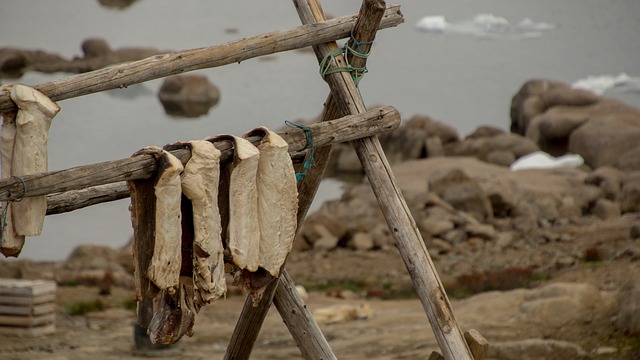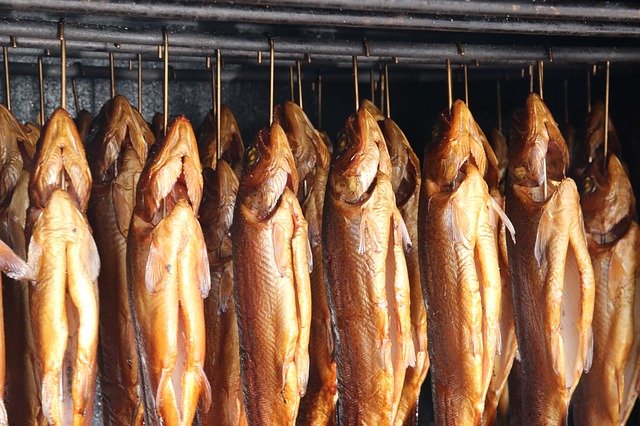
If you plan to preserve and store a chunk of food, pack for camping, be on a high-calorie diet, or add chip-like ingredients to your salad recipe, dehydrate food is probably on your mind.
However, there are instances when dehydrating using a dehydrator is not possible.
So, can I dehydrate without a dehydrator? You can dehydrate foods without dehydrator by using natural heat from the sun, fire/coal, and humid air. You can also use a regular oven, toaster oven, microwave, or car for an industrialized source of heat.
These alternative methods keep the nutritional value of the food just as an electric dehydrator does. It all restrains bacteria, yeasts, molds, and other microorganisms from growing, thereby extending the life of food without using preservatives.
How Long Should I Dehydrate Food?
One perk of investing in an electric food dehydrator is that if the unit has a built-in timer, you can set drying time. It will shut off itself. Therefore, can leave it unattended allowing you to do other chores simultaneously.
Without an electric dehydrator, you must keep an eye on utilizing alternative methods, especially oven and microwave.
But you can leave a closed oven at low temperature overnight, and some ovens turn off automatically after a standard time at cycle.
However, it is risky when dehydrating in the oven because you have to maintain the low temperature and keep its door slightly open to lower the temperature. But if no one is at home or in the kitchen, you may never know what may happen.
Thus, you can’t tell a standard time, but the drying process can be time-consuming. You will have to wait for hours or several days to dehydrate thoroughly.
There is no standard time as to how long you should dry your food. The length of time for water content to remove depends on the alternative method of your choice, the type of food, and practical skills when preparing food.
For example, if you want to dry fleshy fruits such as pear, slicing them in equally thin sizes will allow for enough moisture to reduce in the same amount and speed of drying. If you want to dry leafy vegetables such as spinach, you don’t need to slice it the way you would with a pear.
How Do I Dry Food Using Each Alternative Method?
For a beginner, discovering how to dry your pasta or herbs in your car can be adventurous. But if you are pressed in time because you have to pack light meals for camping two days from now, you probably wonder how to dehydrate successfully.
A little background knowledge about how electric dehydrator functions can guide you along the process of dehydrating using alternative methods.
Remember that an electric dehydrator works by raising enough temperature within the machine. At the same time, its fan circulates heat evenly to remove the moisture of the food inside. It dries specific types of food under the most suitable temperature scale for each type of food.
As such, when you dehydrate food without a dehydrator, you mimic how an electric dehydrator works. Take a look at the following natural dehydrating processes.
1. Dehydrating Under the Sun
Dehydrating food under the sun is the best natural way. The only drawback is that you do not have direct control over the heat. Weather conditions and seasons depending on the calendar and your location in the hemisphere can be your enemy, too. Thus, sun-drying food is best during summer.
What you can, in this case, is place the prepared food on a spot outdoor where there is good air circulation, and the changing direction of the sun won’t throw you out of your spot.
Another issue you have to be wary of is the probability that insects will lay their body on or into the surface of the food. You don’t want to eat food with fragments of insects in it or allow insects to multiply and transfer pathogenic disease.
Make sure you put a screen with small enough holes around the food before you put it outside. You may use bug netting or a think piece of cloth.
2. Air Dehydrating
The process of sun-drying can be applied when air drying food, except that you rely on humidity. That said, you can place the prepared food in a shaded area such as the attic or in your room. Make sure that there is low humidity but a good flow of wind in the area.
Avoid placing it in a highly ventilated area. Otherwise, moisture in the food will allow bacteria, molds, and yeasts to survive and accumulate, hence spoiling the food.
You may also tie the middle or end part of the food using a string. Hang it until dry.
3. Fire or Coal Dehydrating

The advantage of dehydrating food using fire is that you can do it indoors or outdoor regardless of the weather. This method is especially favored if you live in the northern hemisphere since the heat will dehydrate the air around it. Plus, the smoke can keep insects away. Just make sure that the wind won’t blow the flame away.
To dehydrate food using this method, build a small fire in a fire pit, in your fireplace, or wood-burning stove. Use hardwoods such as maple or oak branches or logs. Woods from fruit trees are commonly best for firewood for a longer burning time. Softwoods such as pine burn faster and contain pitches that can contaminate the food.
Keep in mind: you are not cooking or frying. Keep the prepared food at a safe distance from the flames. This will protect the food from getting overdried and your hand from getting burned.
A fire at low heat is enough to dehydrate the food. But it can take a long process. If you are fire drying with the food held by your hand, your hand might get tired. If you are drying prepared meat, I suggest building a fire somewhere you can hang the flesh by a clean wire.
You may also place the meat on a screen or a flat metal two to three feet high from the fire. Or you may tie it by a wire and connect the wire to a metal stand tall enough for the heat to remove the moisture.
Keep the food under heat long enough for the heat to destroy microorganisms.
4. Dehydrating Using Oven
Whether you are using a regular oven or a toaster oven, you can definitely dehydrate your vegetables, fruits, and meat with both. Slice both vegetables and fruits in ¼ inch. Same size and same thin for all. This measurement ensures that the food will dry evenly at the same speed as the clock.
For meat, make sure to remove the outer fats to make your meat smelly once dry.
When the slices are prepared, put a wax paper sheet on top of any flat pan. This is to avoid the pieces from getting sticky when you remove them from the oven.
As for the meat, use a paper towel to dry the extra marinade before putting it on the rack. This will prevent the excess marinade from dripping down while inside the oven.
Dry the food under warm or 120-140 degrees Fahrenheit (49-60 degrees Celsius). Denser fruits usually need 135° F to dehydrate. Vegetables typically need 125° F. Herbs usually need 95° F. Meet should be cooked first at 160° F and then drained at 130-140° F.
To avoid condensation, leave the door of the machine slightly open.
Depending on the water density of the food, the dehydrating time should take between 6 to 10 hours. Naturally, dry food dehydrates faster than juicy food as it contains denser water.
5. Dehydrating Using Microwave
Unlike regular and toaster ovens, making jerky meat in the microwave is not a good option. Given its size, it is only limited to a certain amount of food. Juicy and soft fruits and herbs are suitable for this method.
Place a silicone mat into the microwave to prevent food from getting sticky. Set the timer for 30 minutes or so for fruits and vegetables. Remember, dry fruits such as apples dehydrate faster than juicier fruits such as pineapples and mangoes.
Herbs usually take way less than the time that fruits and veggies need. Setting the timer for five minutes or less for herbs will do.
6. Dehydrating Using a Car
If available, your car can serve as a solar food dehydrator. If it is summer, park the car outside under the sun. Though regardless of the weather, your vehicle can get warm enough, so it is also a good option for dehydrating food.
Take note of the time. Dehydrate with the car method around the day only.
Lay the slices of food on trays. As usual, put a light cloth to cover the food and prevent insects from getting in contact. Place the trays in the backseat. You may also use a string and hang the food if possible.
Make sure to slightly open a window so that the moist air can escape. If the food does not dehydrate until the night, bring it back inside your house.
Do not leave the food overnight in your car. The moist air at night may rehydrate the food.
Tips for Dehydrating Foods Like a Pro
If you are trying to dehydrate food for the first time without a dehydrator, or if you haven’t experienced using an electric dehydrator in the first place, dehydrating using alternative methods might be challenging. It may also be two times discouraging if you’re not a kitchen person.
Still, get that food you want to store for several months and go on. Prepare the food for dehydration. Keep in mind the following tips below for dehydrating food successfully as though you were using an electric dehydrator.
1. Break the rule; set the temperature higher
If you are using methods that can allow you to adjust the temperature, increasing the temperature at first will help you speed up the process. You can do it at 150-160 degrees Fahrenheit or 65-70 degrees Celsius.
Keep an eye on the food if you do this to avoid the food from burning. The burned food will definitely have an unpleasant texture, smell, and taste on top of its nutritional value. When you notice that the surface of the food is already dry, set the temperature lower.
2. Rotate/flip the food
When using an oven, toaster oven, microwave, and fire pit, occasionally rotate the food container so that the heat is distributed evenly. Also, check the bottom of the slices if already dry and flip them over. Otherwise, the food will dehydrate partially instead of uniformly.
3. Give some space
If you put the food on a flat surface, place the pieces about 1.5 inches away from each other. Avoid the slices from touching. Space will allow the air to circulate around the food.
4. Soak in acid
Before dehydrating peeled fruits, soak the slices in an acidic mixture. You can use vinegar, lemon juice solution, or citric acid. Doing this for five to 10 minutes will prevent the fruit from browning. This is because adding acid lowers the pH level of the fruit as it reduces hydrogen contact with oxygen. What’s more, it helps the fruit retain its color and flavor once dry.
5. Eye on the color and texture
Herbs that seem brittle are dehydrated already. While vegetables that snap need to finally get away from heat. Fruits that bend are ready for storage. Meat that cracks and breaks when bent is, uh-oh, overdried.
So, start dehydrating that food you want to store until the following months, pack for the camping, eat with chip sensation for weight gaining, or add on your recipe!
Learn to dehydrate without a dehydrator as if your life depends on it. Besides, the skills you need when dehydrating food are essential for survival.
If you want to learn more about food dehydration, feel free to visit this page.

